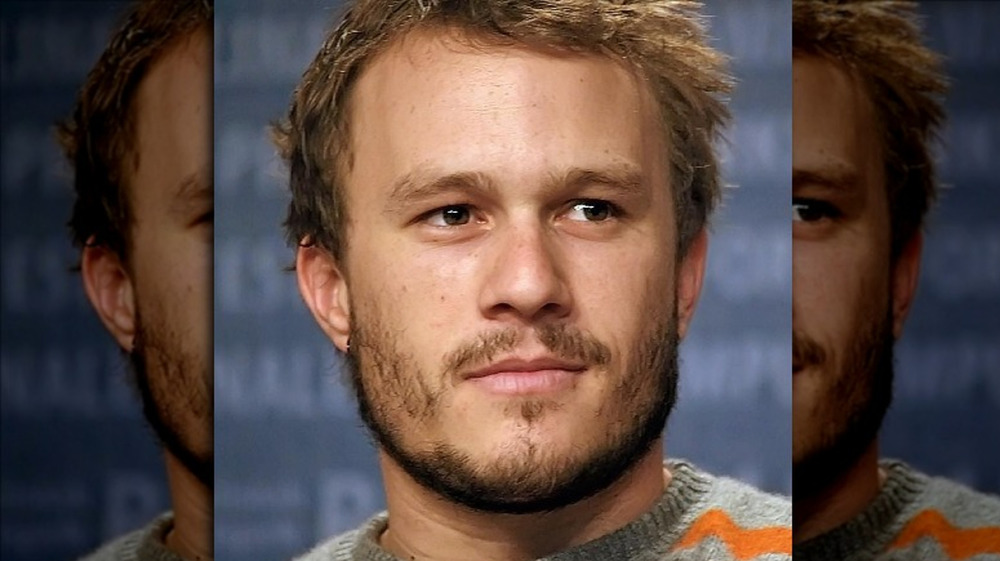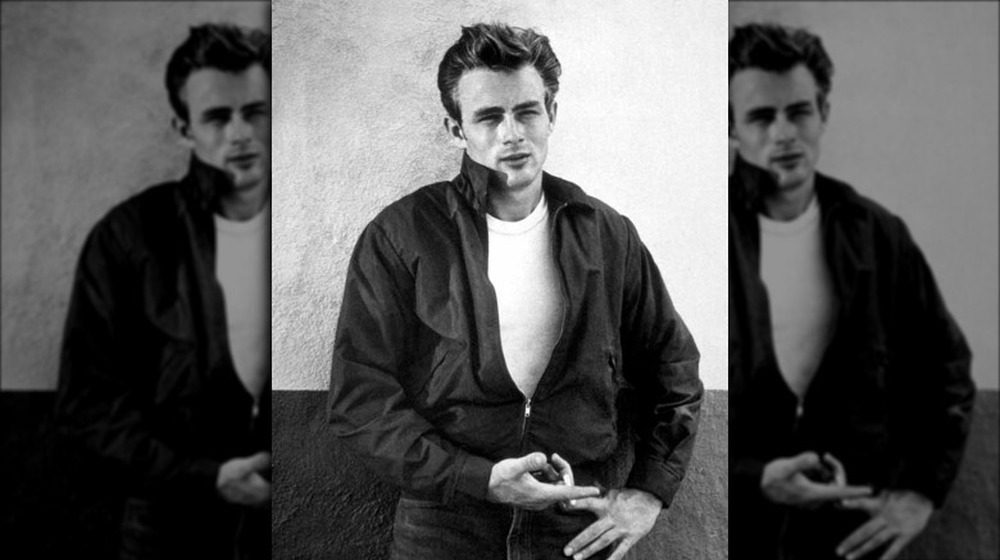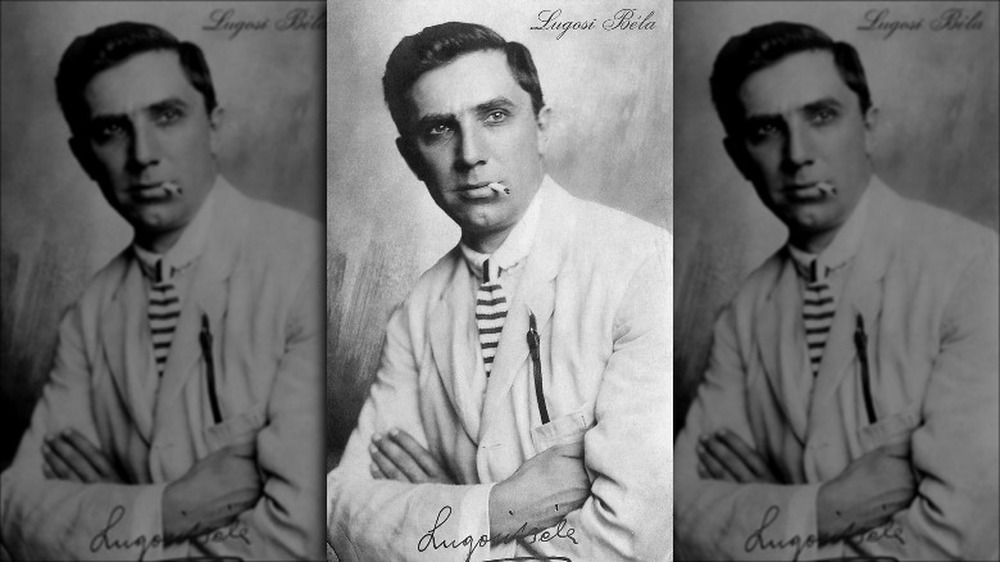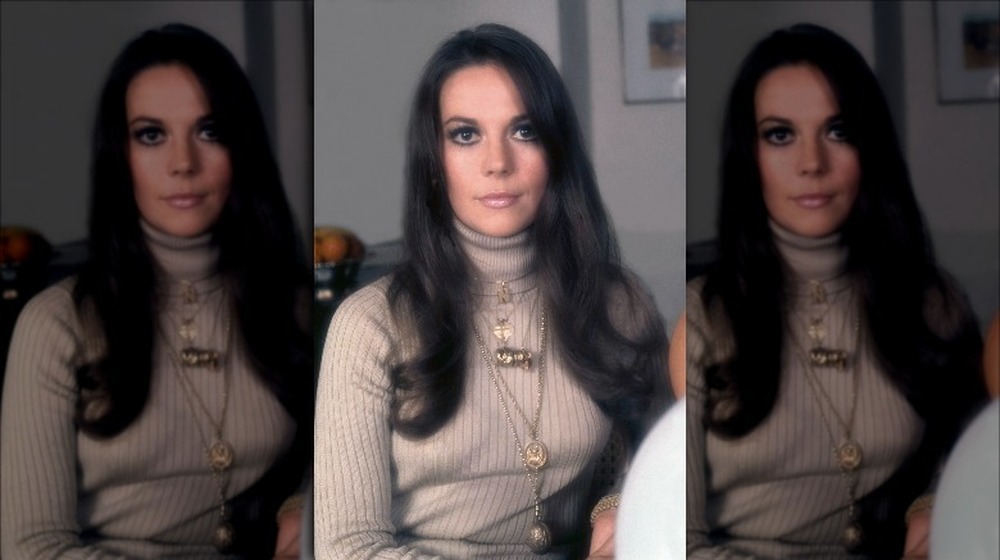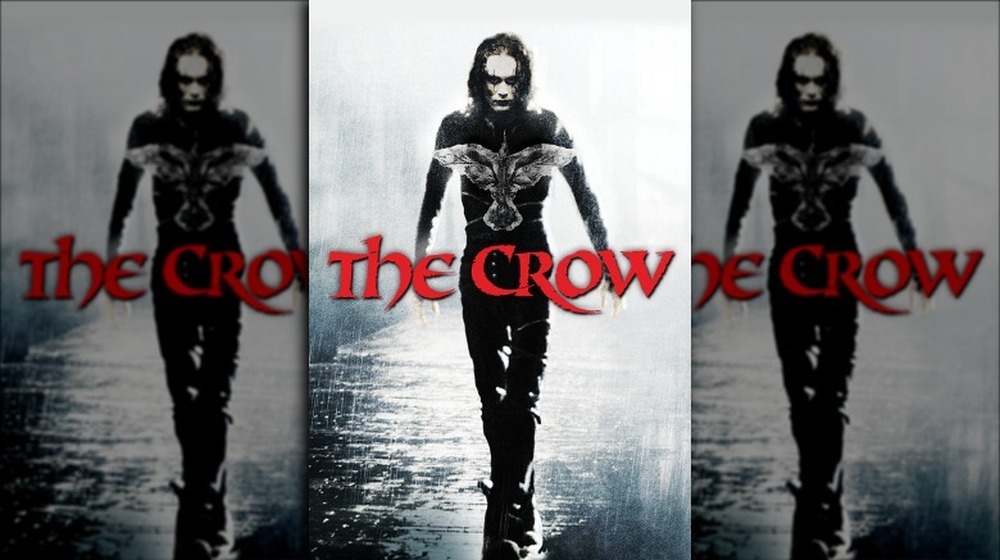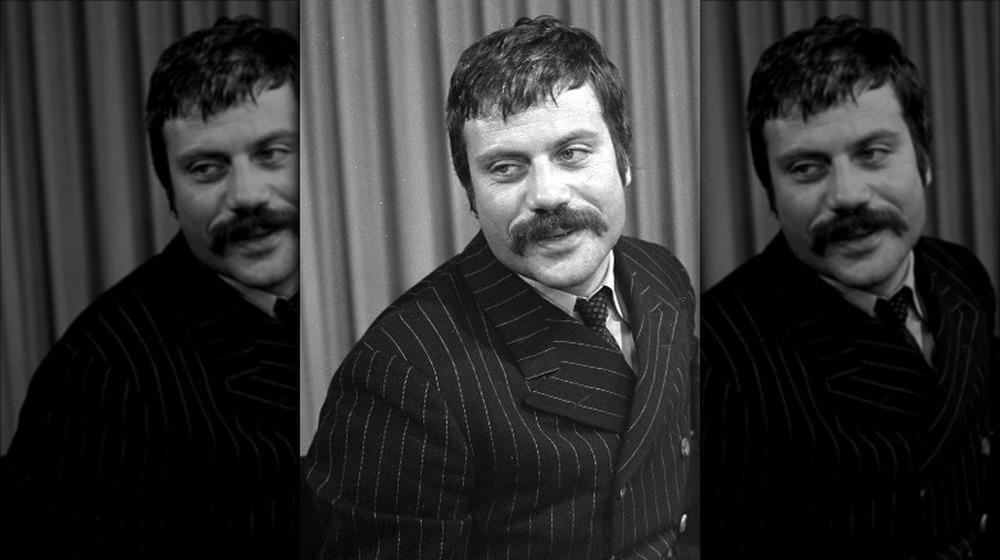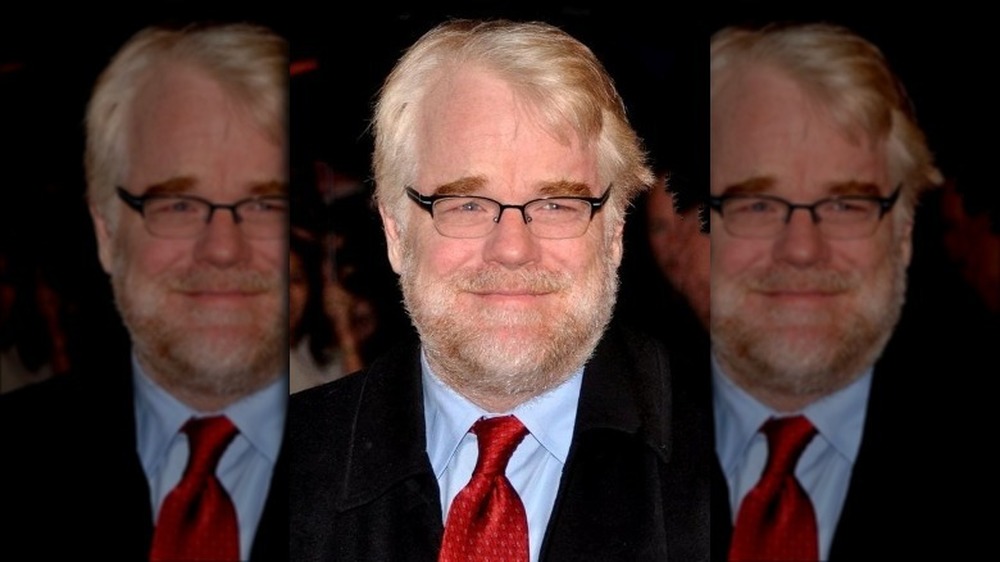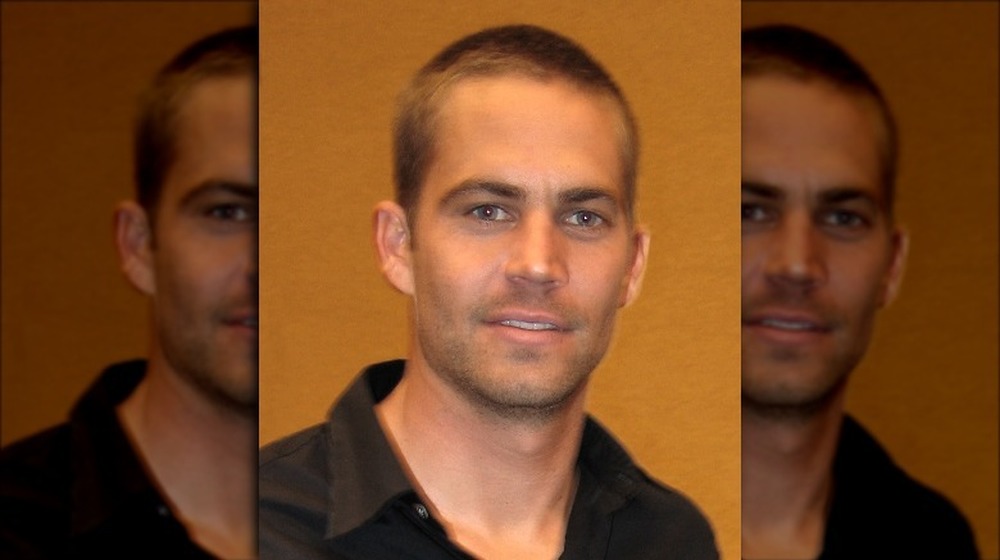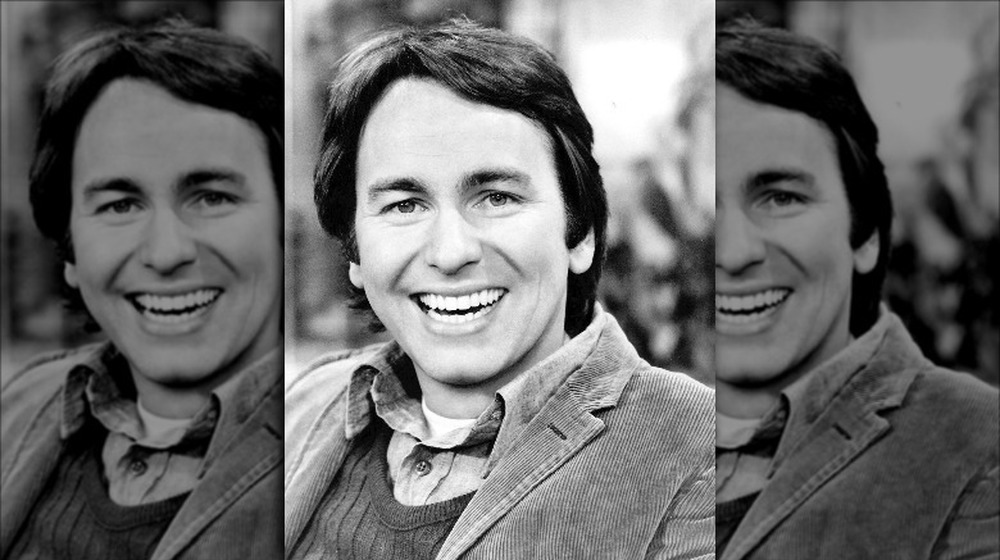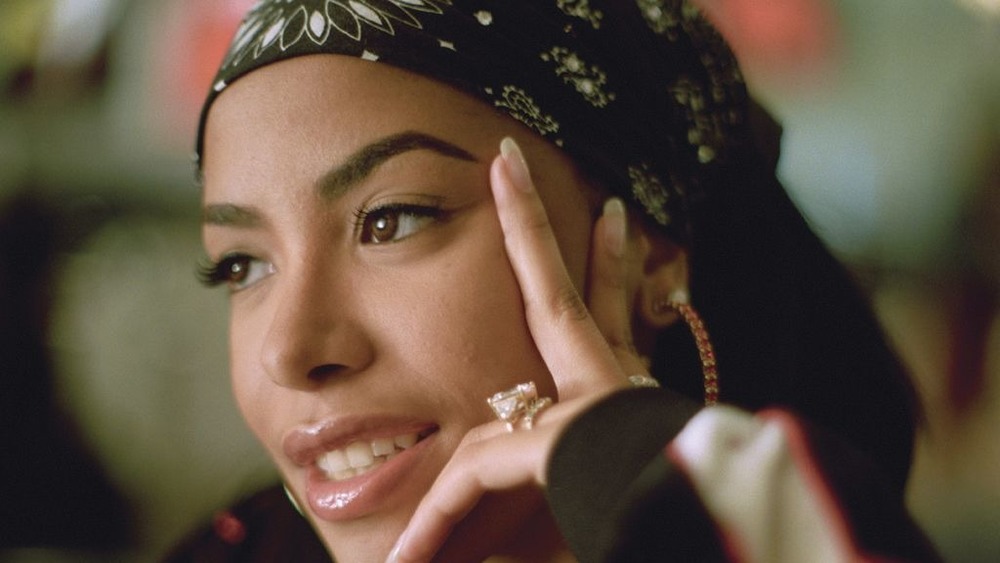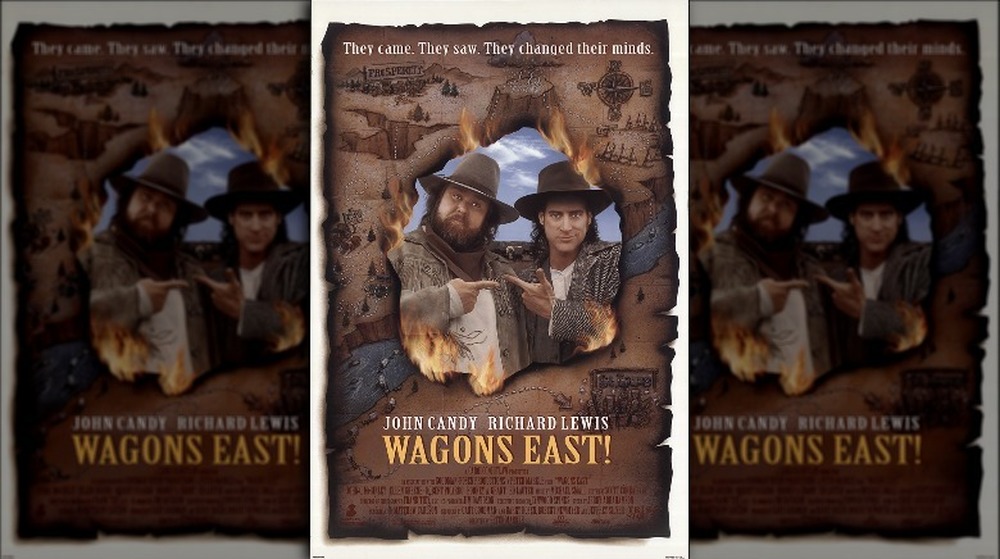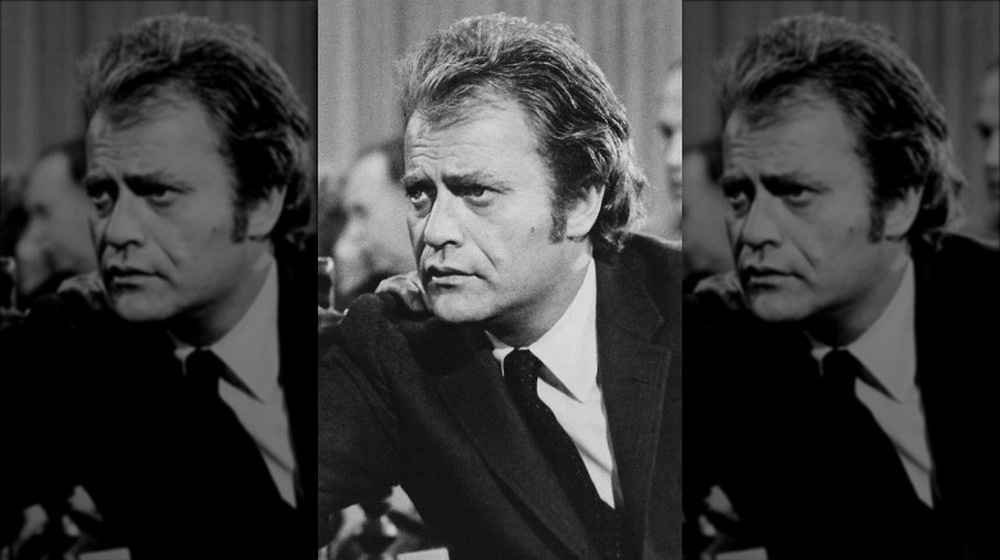Actors Who Passed Away While Filming
As the saying goes, the only certainties in this life are death and taxes. When it comes to huge, expensive projects involving hundreds of people and tens of millions of dollars, making some contingency plans for both is usually the wise choice, which is why major Hollywood films and TV series require that their major stars be insured. When Robert Downey Jr. fell into a deep hole of drug addiction and bizarre public behavior a few decades ago, for example, he lost multiple acting jobs because he was considered too high a risk by the insurance companies. Without that insurance, no one would hire him (eventually, Mel Gibson paid Downey's insurance bond so he could get back to work).
But while insurance can cover a production company or movie studio's financial risks on a film or show, that still doesn't guarantee that the actor won't, you know, die. In fact, actors have kicked the bucket in the middle of filming pretty often. Sometimes the tragedy kills the project before it even gets off the ground, or sometimes the death happens so early in production the actor can be replaced. Sometimes, though, the filming is underway and incomplete when the star keels over, leaving the producers with few good choices. Here are actors who passed away while filming.
James Dean, Giant
Nearly 70 years after his tragic death, it's hard to believe that James Dean only starred in three major roles in his life. After a few years playing bit parts in movies and TV shows, in 1955 Dean landed starring roles in East of Eden and Rebel Without a Cause. The powerhouse performances he gave in those films led to his role as Jett Rink in Giant.
As Biography notes, when Dean began work on Giant only East of Eden had been released to theaters—his breakout performance in Rebel wouldn't hit screens until after his death. Dean was a smart actor who knew that after two roles portraying angry, rebellious teenagers he needed to do something different. His role as a Texas rancher who builds a fortune was an ideal part in a prestige production.
Dean was a race car enthusiast—according to IndyStar, Dean wanted to eventually compete in the Indianapolis 500, and was considered a very good driver by professional racers. Dean used the money from his first big acting roles to buy himself a Triumph Tiger motorcycle and a Porsche 550 Spyder. As reported by The Mercury News, these purchases resulted in his death just as Giant was wrapping up filming. Dean drove too fast and too recklessly. He got a speeding ticket at 3:30 PM on September 30, 1955. Two hours later, he was involved in a crash that left him dead with a broken neck.
Bela Lugosi, Plan 9 From Outer Space
Bela Lugosi became famous for portraying the most famous vampire of all time, Dracula, in the classic 1931 version of the story. But as noted by Open Culture, injuries Lugosi suffered during his military service in World War I left him with significant back pain. Doctors began prescribing morphine, and Lugosi quickly became addicted.
By the 1950s, Lugosi was a washed-up drug addict struggling to survive when he met and befriended Ed Wood. As The Dissolve reports, Wood is often considered to be the worst film director of all time, and his friendship with Lugosi was about to result in what's often considered the worst film of all time: Plan 9 From Outer Space. Wood filmed a few test scenes with Lugosi in early 1956 as they worked on a comeback project for the aging actor. But as Time notes, Lugosi, frail from years of drug abuse, died of a heart attack in August.
Wood, who always had to struggle for funding for his terrible films, didn't let that stop him. Using Lugosi's name, he managed to get enough money together to launch Plan 9 despite the fact that Lugosi was dead. Wood took about five minutes of random footage of Lugosi vamping around and inserted it into his weird story of aliens resurrecting dead people into zombies. The really amazing part is that Lugosi still isn't the worst thing in the film.
Natalie Wood, Brainstorm
If you're unfamiliar with Brainstorm, you're not alone. As noted by Popular Mechanics, Brainstorm was supposed to be a huge cinematic event in the early 1980s. It featured three Oscar winning actors (Christopher Walken, Cliff Robertson, and Louise Fletcher), a director (Douglas Trumbull) who was an Oscar-winning visual effects legend, and a new filming technology that was supposed to revolutionize how we made and watched movies. But it almost wasn't released. The reason is simple: The fourth lead role was played by Natalie Wood, and she died under extremely murky circumstances in the middle of filming.
Wood, Walken, and Wood's husband Robert Wagner climbed aboard the couple's yacht for a weekend during a break from filming, and Wood was found drowned one morning. The death was ruled accidental, but there remain plenty of unanswered questions about what happened to the actress.
Brainstorm was almost shut down as a result. Already an expensive debacle, the studio decided to use Wood's death as an excuse to claim the film was unreleasable and made an insurance claim to recoup their losses. As noted by The Hollywood Reporter, Wood had completed most of her scenes and Trumbull refused to pretend the film couldn't be finished, and so the claim was denied and the studio was forced to complete the movie—but it ruined Trumbull's career as a director.
Brandon Lee, The Crow
Bruce Lee was a superstar whose influence on martial arts films—and action films in general—can't be overstated. His tragic death in 1973 was a shocking loss for movie fans everywhere. As noted by History, 23 years later, his son, Brandon, made his own acting debut in a quest to live up to his father's legend. Just seven years later, the young actor was dead.
According to Flickering Myth, the film adaptation of the underground comic book series The Crow was supposed to be Lee's big break. While it was a low budget production, it had a lot of buzz due to its ultra-cool source material, and Lee's physical skills seemed poised to elevate the film and make it into a cultural phenomenon.
Several scenes involved prop guns and bullets—"blank" rounds where the lead tip is replaced with harmless cardboard. But poor prop handling left one of the removed lead tips in the barrel of the prop gun. As SyFy reports, when actor Michael Massee fired the gun while filming a scene with Lee, he unintentionally killed Lee. Producers raised more money to finish the film, using stunt doubles and special effects to create the illusion of Lee in several scenes.
Oliver Reed, Gladiator
Oliver Reed is famous for two things: Acting and drinking. The New York Times notes that Reed's reputation for binge drinking may have been exaggerated (it's claimed he once drank 126 pints of beer in 24 hours—and did a handstand on the bar to celebrate), but he was certainly boozy enough to make it at least seem possible.
By the time he was in talks with Ridley Scott to appear in Gladiator with Russel Crowe, The Independent reports that Reed's reputation preceded him and he had to promise the director he would remain sober for the duration of the shoot. He broke the promise immediately, reasoning that if he wasn't physically on set it was okay. One night while filming in Malta, Reed went out to a local pub and began imbibing. He then met a group of sailors and ended up in a drinking contest. Halfway through the competition, he said, "I don't feel good," collapsed, and died on the floor of the bar.
Reed still had a lot of scenes left in the film, but as Business Insider notes, Scott was able to rewrite several scenes and use CGI technology to convincingly include Reed using footage the actor had already shot, a feat visual effects supervisor Rob Harvey called "a clever bit of directing and scriptwriting."
Heath Ledger, The Imaginarium of Doctor Parnassus
It's easy to forget that, as IndieWire notes, when Heath Ledger died of an accidental overdose of prescription medication, his most famous role as The Joker in The Dark Knight hadn't yet been released. Ledger had taken on the role of Tony Shepard in the film The Imaginarium of Doctor Parnassus, and was in the middle of filming when he passed away. In the film, Tony falls in love with a girl whose father, an immortal named Doctor Parnassus, was saved from death by making a deal with the devil.
As reported by SyFy, director Terry Gilliam's first reaction to Ledger's death was to scrap the film entirely. Friends and family convinced Gilliam that he had to finish the project, both for himself and for Ledger's legacy.
Gilliam realized that there was a solution right there in the story, which involves two distinct versions of reality. Ledger had filmed almost all of the sequences in one reality, so having the actor physically change when shifting to the other made sense. The director then decided to lean into the concept and hired not one but three actors to film the remaining scenes: Johnny Depp, Colin Farrell, and Jude Law. Gilliam later said he considered Ledger a co-director on the film, and dedicated it to the actor upon its release.
Philip Seymour Hoffman, The Hunger Games: Mockingjay—Part 2
Remember when The Hunger Games was the biggest film franchise in the universe? It was big enough to attract some serious acting talent, including one of the greatest actors of his generation, Philip Seymour Hoffman, who portrayed Plutarch Heavensbee in the film franchise. Sadly, Hoffman died of a drug overdose at age 46 halfway through filming the adaptation of the final book in the series.
As reported by The Guardian, because the final two films split the plot of that book into two, Hoffman's death left gaps in both chapters of the story—including one emotionally vital scene between Heavensbee and the heroine of the story, Katniss Everdeen (played by Jennifer Lawrence). While Hoffman had several conversations with the director concerning how to stage and perform the scene, nothing had been filmed.
According to ABC News, the producers never even considered using CGI and other special effects to replace Hoffman (though they used CGI to add a few tweaks where necessary). Instead, they changed scenes so that other characters took on those moments. For the big emotional scene with Katniss, they hit on the idea of having Heavensbee convey his lines to Katniss in the form of a letter, read by another character. This allowed them to keep the emotional tenor and impact of Heavensbee's lines while respecting the fact that Hoffman had passed on.
Paul Walker, Fast and Furious
Probably no one could have predicted that 2001's The Fast and the Furious would spawn one of the greatest and most-enduring film franchises in history. But by the time Furious 7 was released in 2015, the franchise was one of the highest-grossing ever, according to Forbes.
Furious 7 was the last film Paul Walker appeared in. As reported by The Guardian, Walker was driving in his Porsche with a friend during a break in filming when the friend lost control of the car, killing them both in the crash. His death devastated his family; his daughter sued Porsche, claiming the car-maker's safety cage wasn't strong enough. Porsche argued that Walker had made modifications to his car that undermined its safety, and eventually won in court.
Walker's death also put Furious 7 in jeopardy, but when a film franchise makes that much money people will always find a way. As noted by The Washington Post, the filmmakers used a mix of body doubles—including Walker's brothers—and CGI magic to complete the film, adding in a touching final scene between Walker and fellow star Vin Diesel as the two race one final time. The scene almost explicitly acknowledges that Walker has died, although officially his character simply retired from his adrenaline-soaked life.
John Ritter, 8 Simple Rules for Dating My Teenage Daughter
John Ritter was a low-key comedy legend, a master of physical comedy and a warm, comforting presence on screen. That's why he survived the cheesiness of his breakout, Three's Company: It was impossible not to like and enjoy him.
Beginning in 2002, Ritter starred in a situation comedy on ABC called 8 Simple Rules for Dating My Teenage Daughter, alongside fellow legend Katey Sagal and future superstar Kaley Cuoco. The series did well, and was renewed for a second season. As reported by the Seattle Post-Intelligencer, after filming on several episodes had been completed, Ritter died suddenly of an aortic dissection. His death shocked everyone and left the future of the series in serious doubt.
As noted by The Things, Ritter's death fundamentally changed the show. Instead of replacing Ritter with another actor or writing his character off the show in some benign way, the tone turned dramatic as the writers explored how Ritter's sitcom family would react to the sudden death of their husband and father. After airing the three episodes that Ritter had completed, the show devoted the rest of its season to what can only be described as mourning. The show was renewed for a third season, but without Ritter its rating declined and it was canceled in 2005.
Aaliyah, The Matrix Reloaded
Multi-talented, beautiful, and hard-working, R&B star Aaliyah was on the cusp of acting superstardom in 2001. As noted by IGN, her roles in films like Romeo Must Die and the not-yet-released Queen of the Damned had marked her as a talent to watch and landed her a coveted role in one of the most-anticipated sequels of all time: The Matrix Reloaded.
The true tragedy of Aaliyah's untimely death is how easily it could have been avoided. According to The Independent, Aaliyah and her team had flown to the Bahamas to shoot a music video, and chartered a plane to take them back to Florida. The pilot warned them that they were loading too much equipment and too many people onto the plane, but Aaliyah's people ignored those warnings and insisted the flight take off. The plane crashed moments after takeoff, killing everyone on board.
Only portions of scenes had been filmed with Aaliyah for The Matrix Reloaded, but the film had done extensive pre-production work with her. The film had already been delayed several times, and was delayed again significantly as the Wachowski siblings took a long time auditioning possible replacements. As reported by MTV, they eventually cast Nona Gaye, daughter of Marvin Gaye, to take over the role of Zee in the film.
John Candy, Wagons East
John Candy was easily one of the most beloved actors in recent memory. He starred in some of the most classic comedies of the 1970s and 1980s. Unfortunately, his final, incomplete performance was never going to rise to the level of Uncle Buck or Planes, Trains, and Automobiles.
According to Robert Crane and Christopher Fryer, John Candy didn't want to make Wagons East, but owed the studio one more movie on his contract, and had a lot of debt stemming from his ownership stake in a Canadian football team. He agreed to make the film in order to solve both of these problems. As noted by History, Candy had filmed about one-third of his scenes for the film when he died of a heart attack at age 43. Canoe notes that Candy, whose weight was a lifelong concern, smoked a pack of cigarettes a day, making him a prime target for a heart attack.
To save the film, the producers used a stand-in and used the insurance payout of $15 million to pay for digital effects that used existing footage of Candy to insert him in different scenes. Although the producers announced that this worked "seamlessly," The Week points out that it's actually extremely obvious that they used the same bits of performances several times in the film. Sadly, the movie was an incredible bomb, and currently enjoys a zero percent rating at Rotten Tomatoes.
Vic Morrow, The Twilight Zone
While never a huge star, Vic Morrow was a beloved actor who appeared in some of the most famous movies and TV shows of all time, including The Blackboard Jungle, Roots, and The Bad News Bears. His death is perhaps the most notorious example of an actor dying in the middle of filming.
Morrow was cast in the 1982 film The Twilight Zone, a big-budget version of the classic 1950s TV show. As reported by SyFy, the film was divided into three parts, with different directors (Steven Spielberg, George Miller, and John Landis). Where Spielberg and Miller remade classic episodes, Landis created a semi-original sequence, in which Morrow took on the role of a racist transported to different eras of history to experience prejudice first hand. While living as a Vietnamese man, Morrow was supposed to redeem himself by saving two children from a helicopter attack, but while filming the sequence the helicopter crashed, killing Morrow and both children.
Landis finished the film by changing the ending; instead of the daring helicopter stunt, Morrow's character finds himself on a train heading to a Nazi concentration camp. As History reports, Landis was accused of bending safety rules in order to get the shot and was charged with manslaughter. According to the Los Angeles Times, he was acquitted—but settled civil suits out of court.
